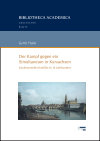Zusammenfassung
Zwischen dem konfessionellen Zeitalter und den umfassenden Toleranzedikten des späten 18. Jahrhunderts liegt eine zeitliche Phase, in der die Forschung die Rolle der Konfession unterschiedlich gewichtet. Das ideengeschichtliche Konzept der Toleranz existierte, aber die Regelungen des Westfälischen Friedens blieben bestehen. Wie also gestaltete sich das alltägliche Zusammenleben verschiedener Konfessionen in einer Region? Am Beispiel der katholischen Minderheit im Kurfürstentum Sachsen wird gezeigt, dass es keinen geradlinigen Weg zur konfessionellen Toleranz des 19. Jahrhunderts gab, sondern dass konfessionelle Disziplinierung und rechtliche Diskriminierung von konfessionellen Minderheiten Alltag und Politik fortwährend bestimmten.
Abstract
Between the age of confessionalization and the comprehensive edicts of tolerance of the late 18th century lies a period in which research emphasises the role of the confession in very different ways. The concept of tolerance existed in the intellectual history, but the regulations of the Peace of Westphalia remained in place. But how was the everyday coexistence of different denominations in a region organised? Using the example of the Catholic minority in the Electorate of Saxony, it is shown that there was no straightforward path to confessional tolerance in the 19th century, but that confessional discipline and legal discrimination against confessional minorities continued to determine everyday life and politics.

